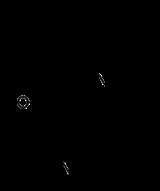
4-HO-DBT
Encyclopedia
4-Hydroxydibutyltryptamine (4-HO-DBT) is a psychedelic
drug
belonging to the tryptamine
family. It is found either as its crystalline hydrochloride
salt
or as an oily or crystalline base
. 4-HO-DBT was first made by the chemist Alexander Shulgin
and reported in his book TiHKAL
. Shulgin reported a dosage of 20mg orally to be without effects. However this compound has subsequently been sold as a "research chemical" and anecdotal reports suggest that at higher doses 4-HO-DBT is indeed an active hallucinogen, although somewhat weaker than other similar tryptamine derivatives.
Several different isomers of this compound could potentially be made (see DBT
for a fuller discussion) but of these only the isobutyl isomer 4-HO-DIBT has been synthesised (mp 152-154 °C) and was also found to be inactive at a 20mg dose.
Psychedelics, dissociatives and deliriants
This general group of pharmacological agents can be divided into three broad categories: psychedelics, dissociatives, and deliriants. These classes of psychoactive drugs have in common that they can cause subjective changes in perception, thought, emotion and consciousness...
drug
Psychoactive drug
A psychoactive drug, psychopharmaceutical, or psychotropic is a chemical substance that crosses the blood–brain barrier and acts primarily upon the central nervous system where it affects brain function, resulting in changes in perception, mood, consciousness, cognition, and behavior...
belonging to the tryptamine
Tryptamine
Tryptamine is a monoamine alkaloid found in plants, fungi, and animals. It is based around the indole ring structure, and is chemically related to the amino acid tryptophan, from which its name is derived...
family. It is found either as its crystalline hydrochloride
Hydrochloride
In chemistry, hydrochlorides are salts resulting, or regarded as resulting, from the reaction of hydrochloric acid with an organic base . This is also known as muriate, derived from hydrochloric acid's other name: muriatic acid....
salt
Salt
In chemistry, salts are ionic compounds that result from the neutralization reaction of an acid and a base. They are composed of cations and anions so that the product is electrically neutral...
or as an oily or crystalline base
Base (chemistry)
For the term in genetics, see base A base in chemistry is a substance that can accept hydrogen ions or more generally, donate electron pairs. A soluble base is referred to as an alkali if it contains and releases hydroxide ions quantitatively...
. 4-HO-DBT was first made by the chemist Alexander Shulgin
Alexander Shulgin
Alexander "Sasha" Theodore Shulgin is an American pharmacologist, chemist, artist, and drug developer.Shulgin is credited with the popularization of MDMA, commonly known as ecstasy, in the late 1970s and early 1980s, especially for psychopharmaceutical use and the treatment of depression and...
and reported in his book TiHKAL
TiHKAL
TiHKAL: The Continuation is a 1997 book written by Alexander Shulgin and Ann Shulgin about a family of psychoactive drugs known as tryptamines. A sequel to PiHKAL: A Chemical Love Story, TiHKAL is an acronym that stands for Tryptamines I Have Known and Loved.-Content:TiHKAL, much like its...
. Shulgin reported a dosage of 20mg orally to be without effects. However this compound has subsequently been sold as a "research chemical" and anecdotal reports suggest that at higher doses 4-HO-DBT is indeed an active hallucinogen, although somewhat weaker than other similar tryptamine derivatives.
Several different isomers of this compound could potentially be made (see DBT
Dibutyltryptamine
Dibutyltryptamine is a psychedelic drug belonging to the tryptamine family. It is found either as its crystalline hydrochloride salt or as an oily or crystalline base. DBT was first synthesized by the chemist Alexander Shulgin and reported in his book TiHKAL ...
for a fuller discussion) but of these only the isobutyl isomer 4-HO-DIBT has been synthesised (mp 152-154 °C) and was also found to be inactive at a 20mg dose.

